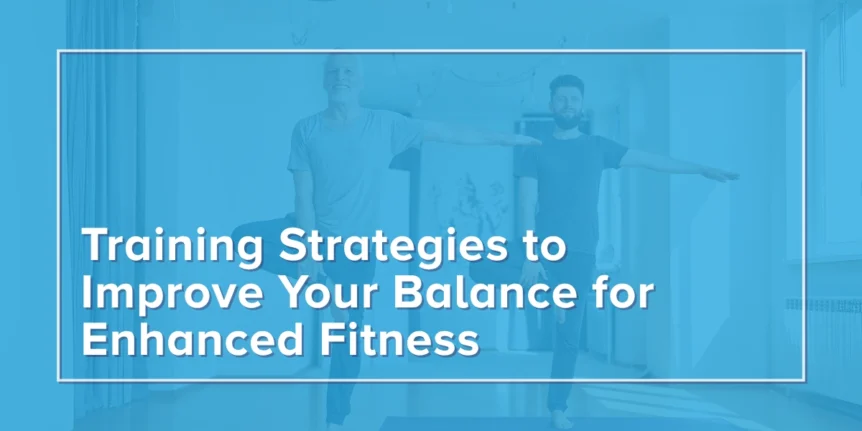Why Balance Training Is Important
Balance training isn’t just for athletes or older adults—it’s important for everyone. It helps with overall fitness, improves coordination, supports good posture, and can make daily life easier (1). Whether you’re into sports or want to move better, improving your balance has many benefits.
What Is Balance?
Balance is the ability to keep your body steady and stable. Your body uses different systems to maintain balance (1):
- Vision: Seeing where you’re going helps you stay balanced.
- Proprioception: This is your body’s sense of where it is in space.
- Vestibular System: Located in your inner ear, it helps track the position and movement of your head.
These systems work together to keep you steady as you move or stay still.
The Role of Core Strength
A strong core is key to good balance. Your core includes the muscles in your stomach, back, and hips. These muscles connect your upper and lower body, helping you stay upright and support your spine. Strengthening your core also helps your body handle physical stress better, which improves coordination and is important for activities like changing direction quickly or staying steady on uneven ground, which can help prevent falls and injuries (2).
Why Strength Matters for Balance
Building strength, especially in your core, hips, and legs, is important for improving balance. Strong muscles provide support and stability for both standing still and moving. Strengthening the muscles around your ankles, knees, and hips helps your body adjust when your weight shifts or when you change direction. Strength training improves the function of larger muscles, such as those in your legs and back, and the strength of the smaller stabilizing muscles around your joints (3).
Strength training also improves proprioception, or knowing where your body is in space (3). As your muscles get stronger and your coordination improves, you’ll react faster to changes in balance, which can help prevent falls if you trip or stumble.
Simple Balance Exercises You Can Do
Balance exercises can be added daily to core and strength exercises to help improve coordination and body control.
Tightrope Walk
- How to Do It: Imagine walking on a tightrope by placing one foot in front of the other. With arms stretched out for balance, walk in a straight line slowly and steadily.
- Why It Works: This improves balance and coordination by forcing you to focus on each step and engage stabilizing muscles.
Single-Leg Balance
- How to Do It: Stand on one leg and hold the position for 20–30 seconds. Switch legs. To make it more challenging, close your eyes or move your arms.
- Why It Works: This helps strengthen your leg muscles and improves balance by requiring core and lower body stability.
Clock Reach
- How to Do It: Imagine standing in the centre of a clock. Balancing on one leg, reach forward (12 o’clock), sideways (3 o’clock), and backward (6 o’clock) with the other leg. Switch legs.
- Why It Works: This exercise enhances balance by requiring control and precision while moving your leg in different directions.
Front and Back Weight Shifts
- How to Do It: Stand with your feet hip-width apart. Slowly shift your weight to your toes, lifting your heels off the ground, then shift your weight back to your heels, lifting your toes.
- Why It Works: This simple exercise improves balance by teaching your body to stabilize as you shift your weight.
Keep Practicing!
Improving balance takes time and practice. You’ll notice better stability and coordination by adding simple balance exercises to your daily routine and gradually challenging yourself with your core and strength exercises. The more you practice, the better your balance will get!
References
- Judge J. O. (2003). Balance training to maintain mobility and prevent disability. American journal of preventive medicine, 25(3 Suppl 2), 150–156. https://doi.org/10.1016/s0749-3797(03)00178-8
- Hibbs, A. E., Thompson, K. G., French, D., Wrigley, A., & Spears, I. (2008). Optimizing performance by improving core stability and core strength. Sports Medicine, 38(12), 995–1008. https://doi.org/10.2165/00007256-200838120-00004
- Holviala, J. H., Sallinen, J. M., Kraemer, W. J., Alen, M. J., & Häkkinen, K. K. (2006). Effects of strength training on muscle strength characteristics, functional capabilities, and balance in middle-aged and older women. The Journal of Strength & Conditioning Research, 20(2), 336–344. https://doi.org/10.1519/R-17094.1



